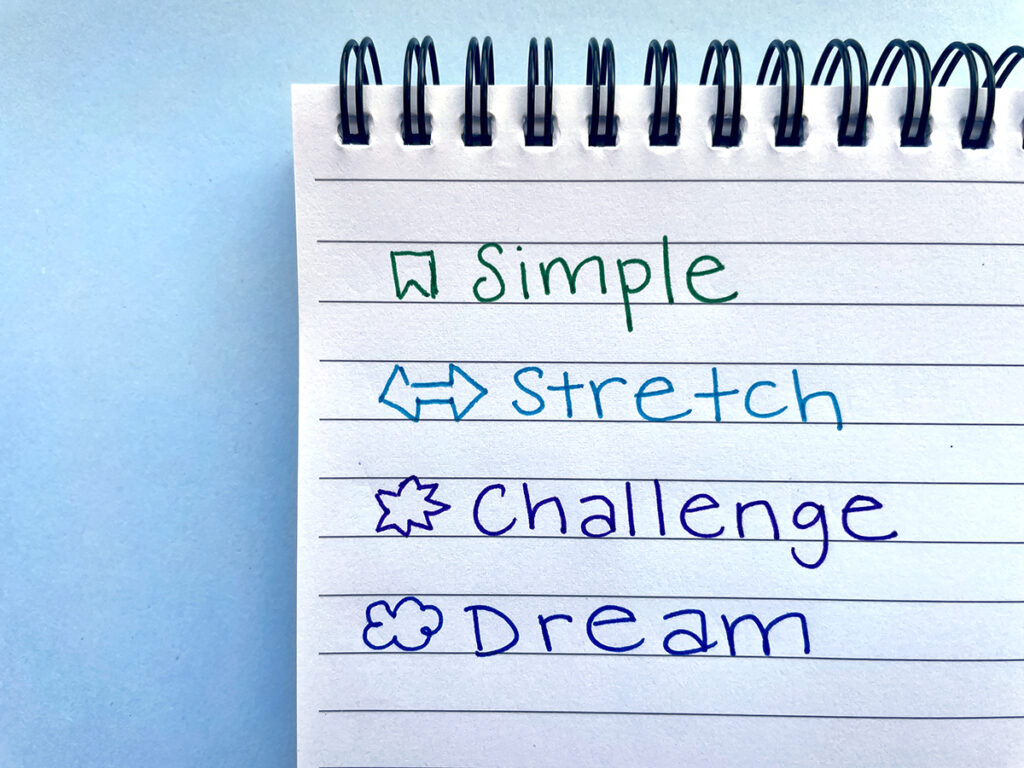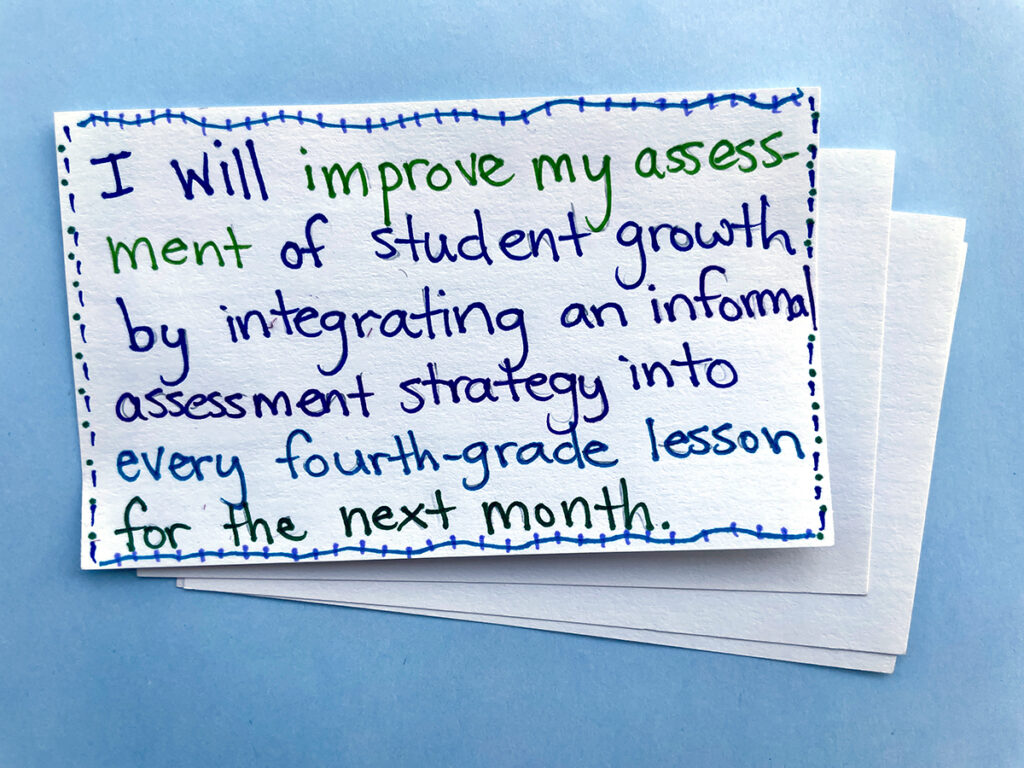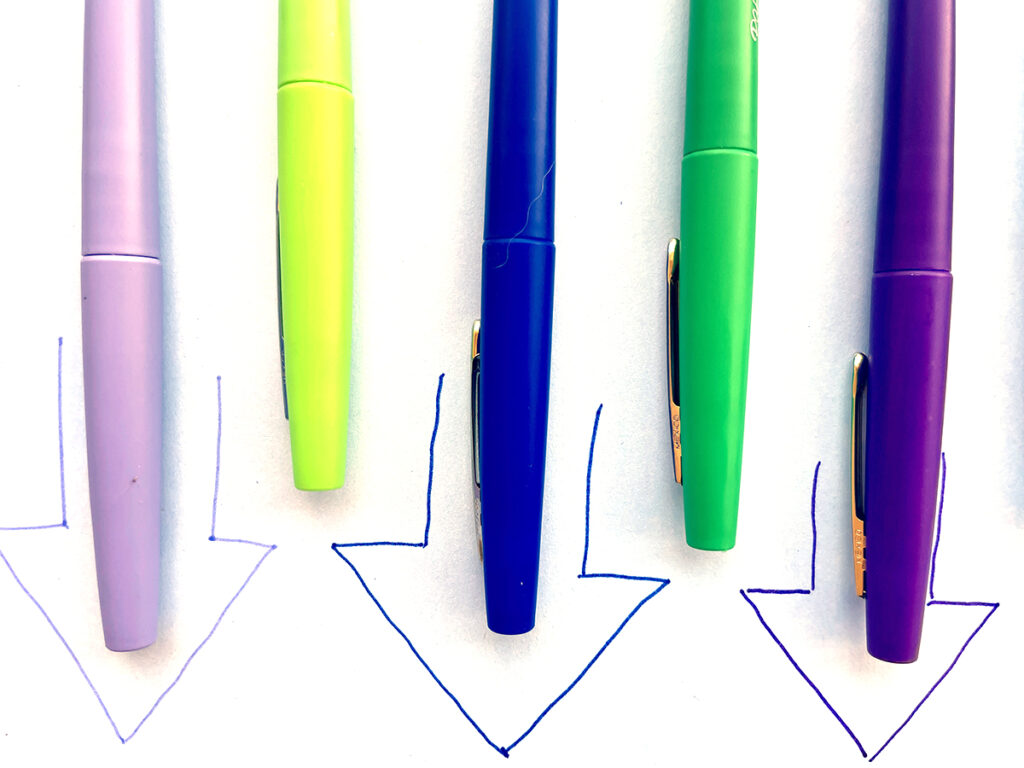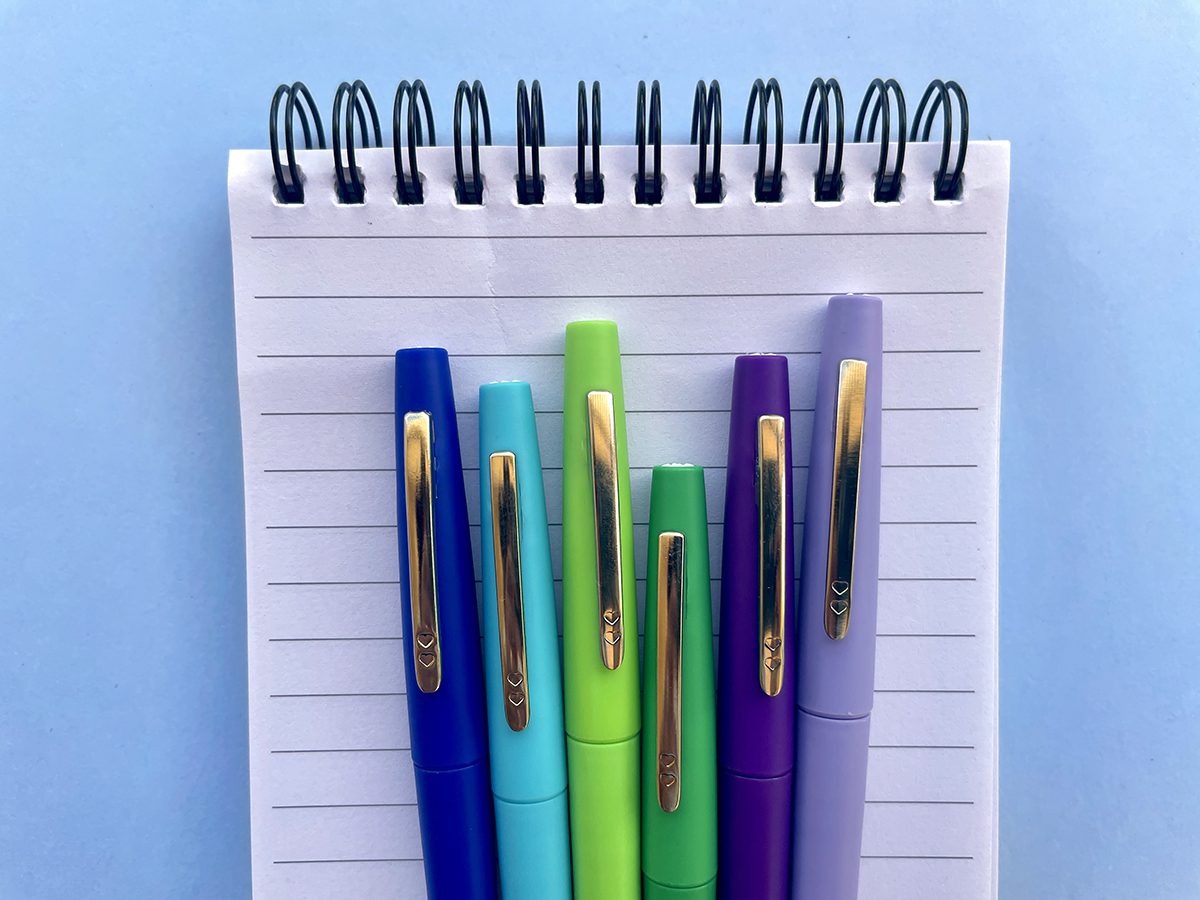How many times have you seen, heard, or said, “New year, new me!” at this time of year? With a new year comes the opportunity to set your intentions and resolve to improve your life. As the reflective art teacher-leader you are, this possibility is exciting. The only thing that puts a damper on your elation is the ghost of past unaccomplished goals. Never fear! It’s time to chase away those ghosts and set yourself up to meet your goals this year.
Reflective art teacher-leaders are constantly reviewing all areas of their lives for ways to enhance their practices. Goal setting is the process of formalizing this review to affect measurable change in the classroom. Goals are linked to higher motivation, self-esteem, self-confidence, and autonomy. When you set goals, your brain rewires to achieve what you want to accomplish. Specific goals are most likely to help you achieve what you want in your classroom.
Keep reading for five tips to help you confidently set achievable goals for your art room.

1. Draft goals in two to three areas of your art teacher life that you are most passionate about exploring or changing.
Make a list of parts of your art teacher life you want to focus on. AOEU presents thirteen pillars to start with.
Here’s how you can apply the pillars to your goal setting:
- Choose a category.
- Pick two to three target areas and reflect on what they look like in your art room. What is working? What could be better? What do you wish this looked like in your classroom?
- Draft goals that will help you improve in your target areas. Pull phrases and ideas from your brainstorming. It’s okay if your goals are broad and a bit ambiguous to start.
You may come up with something like this:
- Diversity & Inclusion
Make my classroom more ELL-friendly. - Assessment
Get better at assessing my students’ growth. - Self-Care
Spend more time making art for myself.
2. Select goals that will stretch and challenge you; this will help keep you motivated as you achieve them.
Categorize the goals you drafted according to achievability. You need challenging goals so your brain will be motivated to achieve them. If your goals are too easy, you will quickly lose interest. If your goals are too rigorous and out of reach, you will quickly give up.

Use these achievability categories to help you organize your goals:
- Simple
These are goals you only have to make minor changes to achieve. With a few simple adjustments, you can meet this goal. - Stretch
These are goals you will have to stretch yourself a little to achieve. It will take consistency and courage for you to meet this goal. - Challenge
These are goals that take major adjustments or changes to achieve. You need to pivot in your thinking and actions to meet this goal. - Dream
These are goals that will take more than you have to give right now. This is an ideal you will slowly work your way up to.
Consider selecting at least one stretch and one challenge goal. This will give you something to work towards without overwhelming you in the process. Strike a balance between difficult and impossible.
3. Refine your goals so they are specific, measurable, achievable, relevant, and timely.
Measure your goals according to the SMART metric to develop a growth mindset. SMART goals give purpose, direction, and organization to what you are trying to accomplish so that you are more likely to succeed.
Answer the following questions to align your goals with the SMART metric:
- Specific
What exactly do you want to accomplish?
How can you use precise language and numbers to define further what you want? - Measurable
How will you know when your goal is met?
What does success look like for this goal? - Achievable
Is this a realistic goal you can meet?
Can you access the tools and resources you need? - Relevant
How will meeting this goal help you?
How does this goal align with the direction you want your life and career to take? - Timely
When will you accomplish this goal?
Is there a specific date or range of time you want to devote to working on it?
4. Write your two to three final goals with confidence using all of the information you gathered.
Transform the general goals you drafted into achievable ones. Start by stating the specific things you want to accomplish and why. Then, state what you are going to do to succeed, and end with a time frame for your goal.
Follow these examples:
- Before: Make my classroom more ELL friendly.
After: I will provide more ELL-friendly access to classroom materials by labeling all of my supplies with visual labels by the end of the quarter. - Before: Become better at assessing my students’ growth.
After: I will improve my assessment of student growth by integrating an informal assessment strategy into every fourth-grade lesson for the next month. - Before: Spend more time making art for myself.
After: I will dedicate time to my own artistic practice by joining Make Art With Me on AOEU’s Instagram Live at least twice a month.
5. Prominently display your goals in a place where you will see them often.
Paint a poster of your goal to hang by your desk. Draw your goal on a mirror in your house or classroom. Write it on a sticky note for your calendar or computer back. Jot it down in the margin of your plan book. Anything that will routinely bring you face-to-face with your goal will work!

Now that you set achievable goals, here are five bonus tips to further set you up for success.
1. Set benchmarks for check-ins along the way.
Benchmarks help you measure where you want to be at each stage of your journey. Think of them as mini-goals under the umbrella of what you are ultimately aiming for. Check your progress against these benchmarks to keep you on track and remind you of how much you have accomplished!
Here’s an example:
- SMART Goal
I will improve my assessment of student growth by integrating an informal assessment strategy into every fourth-grade lesson for the next month. - Benchmark 1
I will choose an assessment activity and introduce it to the fourth-grade classes by the end of Week One.
2. Determine action steps to get you started.
Action steps are the things you will do to get you working towards your goal. Is there research you need to do? Are there knowledgeable professionals you can contact? Do you need to make a checklist or a spreadsheet? What is the first step you can take?
Let’s continue the assessment example:
- SMART Goal
I will improve my assessment of student growth by integrating an informal assessment strategy into every fourth-grade lesson for the next month. - Benchmark 1
I will choose an assessment activity and introduce it to the fourth-grade classes by the end of Week One. - Action Step 1
Choose an assessment activity to do at the beginning, middle, or end of class before Week One. - Action Step 2
Introduce your assessment activity to the fourth-grade classes by the end of Week One.
3. Expect to fail, but adopt a growth mindset.
More likely than not, you will miss some of your benchmarks or deadlines. That is okay! It is completely normal to fall behind or miss some. When this happens, simply readjust and keep going. Be flexible with your big and small goals, and be gracious with yourself along the way.
4. Share your goals to help keep you accountable.
Being accountable to someone other than yourself can be a great motivator. Your teacher bestie, an online community, a trusted supervisor, or even your students can support you.
5. Celebrate the little wins as you go.
It takes hard work to achieve the stretch and challenge goals. Did you take your first step? Did you meet a benchmark? Did you fail to meet a deadline but kept going anyways? Take the time to celebrate it all. Recognize and take pride in what you are accomplishing!

When you finally achieve what you set out to do, make a big deal out of it! Treat yourself to a spa day, get a bite at your favorite restaurant, or order new art supplies. Plan a trip, buy some artwork from your favorite artist, or share your success with your art teacher community. Reward yourself without hesitation because you chased away the ghosts of unaccomplished goals and got it done. Next year, you can more confidently say, “New year, new me!”
What is one achievable goal you set for yourself this year?
What is the first step you will take to work toward this goal today?
Magazine articles and podcasts are opinions of professional education contributors and do not necessarily represent the position of the Art of Education University (AOEU) or its academic offerings. Contributors use terms in the way they are most often talked about in the scope of their educational experiences.





